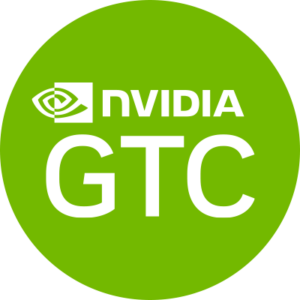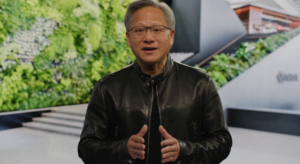
NVIDIA CEO Jensen Huang to Deliver Keynote at GTC 2024

Few companies have ever enjoyed the hot streak that NVIDIA is going through. With the booming GenAI market, NVIDIA shares have tripled in 2023, and continue to rise sharply this year. The meteoric rise of the “kingpin” of chips is a result of the growing demand for its specialized and costly graphic processing units (GPUs), commonly used for training GenAI platforms.
The future of AI goes far beyond individuals using GenAI applications. Companies are now integrating AI into all aspects of their businesses, making NVIDIA products even more valuable. The success of NVIDIA has catapulted the cofounder and CEO of NVIDIA, Jensen Huang, to become one of the most influential people in the world of AI.
Huang is set to deliver a two-hour keynote address, at GPU Technology Conference (GTC) 2024. The convention is set to commence on Monday 18th March at the San Jose SAP Center. The keynote will be live-streamed. More than 16,000 people are expected to attend the event in person, with close to 300,000 joining online. It’s no surprise that the event is taking place at the SAP Center, which is typically used for sporting events and concerts.
In this keynote address, Huang is expected to explore the AI advances that are shaping our future and outline what is ahead for NVIDIA this year. “Generative AI has moved to center stage as governments, industries, and organizations everywhere look to harness its transformative capabilities,” Huang said recently.
In the previous GTCs, NVIDIA used the stage to debut some of its biggest products and innovations including the NVLink, NVSwitch, Drive kit for automotive, and Clara for healthcare.
 We can expect Juang to share updates on the company’s new AI chip, the B100 Blackwell, which the company claims is its most capable AI GPU yet.
We can expect Juang to share updates on the company’s new AI chip, the B100 Blackwell, which the company claims is its most capable AI GPU yet.
The B100, which is set to be available later this year, is an upgrade from the hugely popular H200 chip. The specifications and price of the B100 have not been made public yet, but we can expect to get new details about the chip from Huang, including the power requirements.
There have been some concerns in the industry about the significant amount of power needed by NVIDIA chips. Could this be the Achilles’ heel of NVIDIA chips? NVIDIA wouldn’t want to leave this issue unaddressed.
GPUs were originally developed for rendering graphics in video games; they have evolved into multithreaded, many-core processors. They have been referred to as the “gold of AI”. GPUs are the foundation for today’s Gen AI as they can employ parallel processing and GPU systems can scale up to supercomputing heights. In addition, the GPU software stack for AI is broad and deep.
These capabilities allow GPUs to perform technical calculations faster and with better energy efficiency. This makes them ideal for AI training and inference. A study by Stanford University showed that GPU performance has increased roughly 7,000 times since 2003.
GPUs have become the dominant computing platform for AI/ML, and this has made NVIDIA, the leading manufacturer of GPUs, significantly more valuable and one of the biggest winners in the AI industry.
NVIDIA isn’t the only manufacturer of chips, but the company was quick to realize the potential of AI chips. The competitors, such as Intel, did not start investing in the development of AI chips soon enough. Credit also needs to be given to the NVIDIA leadership, who realized the potential of AI early and took steps accordingly.
NVIDIA chips continue to sell out as they have superior software and much of the AI infrastructure is already built around NVIDIA chips. While NVIDIA’s dominance is being challenged by big tech companies, it would be difficult to displace NVIDIA as the top AI chip manufacturer in the world.
Related Items
ChatGPT Puts AI At Inflection Point, Nvidia CEO Huang Says
Nvidia CEO Calls for Sovereign AI Infrastructure































